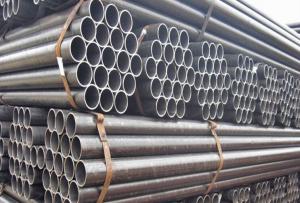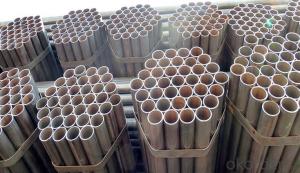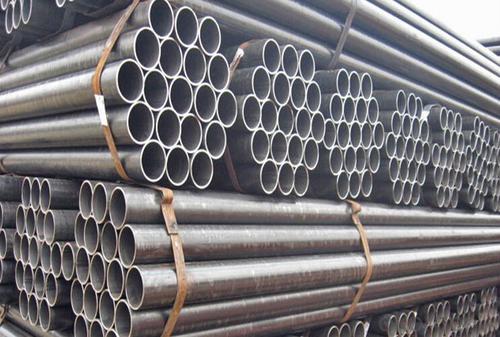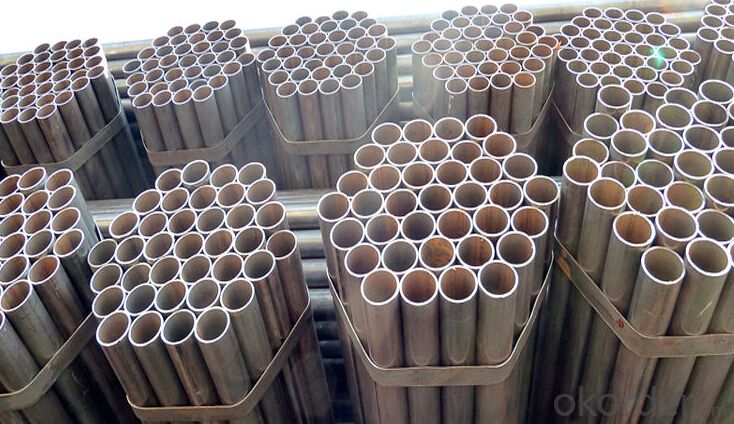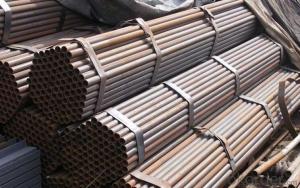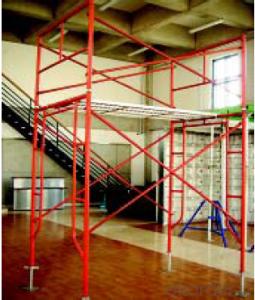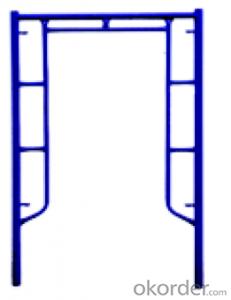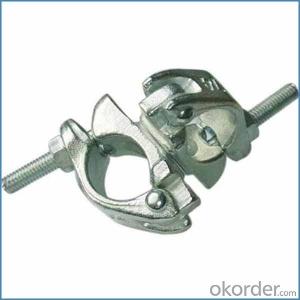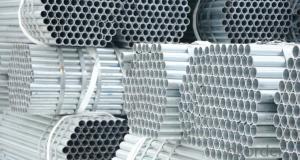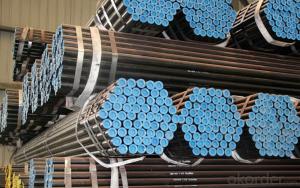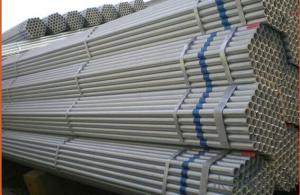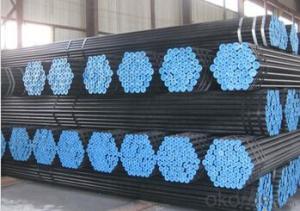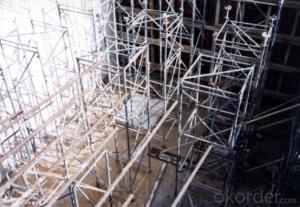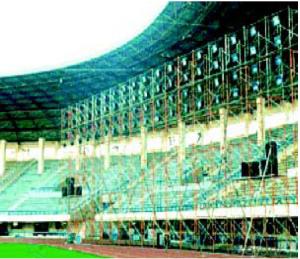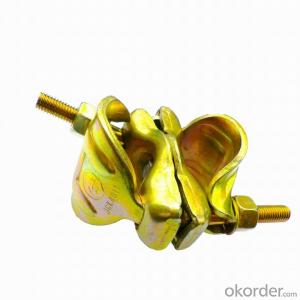STEEL TUBE SELF CLIMBING SCAFFOLDING
- Loading Port:
- China Main Port
- Payment Terms:
- TT OR LC
- Min Order Qty:
- -
- Supply Capability:
- -
OKorder Service Pledge
Quality Product, Order Online Tracking, Timely Delivery
OKorder Financial Service
Credit Rating, Credit Services, Credit Purchasing
You Might Also Like
Quick Details
| Thickness: | Outer Diameter: | ||||
| Place of Origin: | Secondary Or Not: | Application: | |||
| Technique: | Certification: | Surface Treatment: | |||
| Special Pipe: | Alloy Or Not: | Brand Name: | |||
| Material: | Ending Type: | Welded Line Type: | |||
| Welding technique: | Other Application: | L/C at Sight: | |||
| Delivery Condition: | Business type: | Main Market:: | |||
| Grade: | Standard: |
Packaging & Delivery
| Packaging Detail: | packing in bundle with steel strips; with seaworthy package at the end; could be done with your requirement. |
| Delivery Detail: | within 10-30 days after receipt of deposit, ASAP |
Specifications
ROUND STEEL TUBE SELF CLIMBING SCAFFOLDING
1.Material: Q235-Q345
2.OD:1"-4"
3.WT:2-9mm
4.delivery time:15-30days
STEEL TUBE SELF CLIMBING SCAFFOLDING
1.Details of STEEL TUBE SELF CLIMBING SCAFFOLDING
| Product | STEEL TUBE SELF CLIMBING SCAFFOLDING |
| Welding Technique | Electric Resistance Welding(ERW) |
| Standards | ASTM A53, BS1387, GB/T9711, GB/T3901 |
| Payment Terms | L/C at sight, D/A, D/P, T/P Western Union, MoneyGram acceptable, T/T preferred |
| Application | greenhouse pipes, scaffolding pipes, transportation the ocean oil and gas, mechanical tube of ocean platform, power station, chemical industry and building, construction foundation piles, steel structure building, for low-pressur fluid service, steel structure bridges etc. |
| Additional Fabracation | plain ends pipe,cutting threading, beveled, 3PE steel pipe, black and color painting, anti-rusting oilsteel pipe, varnish paintingsteel pipe, zinc-coating steel pipe, steel stamp, drilling, diameter reducing pipe etc. |
| Supply Experience | 10 years |
| Business Type | Manufacturer and Trading Company |
| Cooperation Shipowner | MSK, CMA, MSC, HMM, COSCO, UA, NYK, OOCL, HPL, YML, MOL |
| Remarks | We can do unregular orders as customers requests! All kinds of steel hollow pipes can be provided. Don't hesitated to contact us. |
- Q: Can steel tube couplers be used with non-standard scaffolding tubing?
- No, steel tube couplers cannot be used with non-standard scaffolding tubing. Steel tube couplers are designed to be used specifically with standard scaffolding tubing, which is typically made of galvanized steel and has specific dimensions and specifications. Non-standard scaffolding tubing may have different dimensions, materials, or specifications, which may not be compatible with steel tube couplers. It is important to use the appropriate couplers and tubing that are designed and tested to work together to ensure the safety and stability of the scaffolding structure.
- Q: How to write Feature articles, Letters to the editors and editorials Can i please have a scaffold 4 mi yearlysThanks
- Regarding guidelines for letters to the editor, the subject matter of letters to the editor vary widely. However, the most common topics include: Supporting or opposing an editorial stance, or responding to another writer's letter to the editor. Commenting on a current issue being debated by a governing body – local, regional or national depending on the publication's circulation. Often, the writer will urge elected officials to make their decision based on his/her viewpoint. Remarking on materials (such as a news story) that have appeared in a previous edition. Such letters may either be critical or praising. Correcting a perceived error or misrepresentation. Letters are usually short, as they must sometimes fit in a limited space. Many newspapers require that letters to the editor be under a certain number of words, and may attach other conditions, such as prohibiting anonymous letters, letters that contain misinformation, are meant to libel someone, are obscene or in poor taste, or meant to resolve a personal conflict. In at least one case, a publication redefined its guidelines and use of the form, based on the evolving needs of the publication and the community it served. Other frequent conditions include limiting writers to one published letter within a specified time period (often, one per 30 days) or limiting the publication of letters on controversial topics after a certain time period, especially if the debate takes an emotional toll on the involved parties. Some editors will also decline to publish letters that have also been sent to other newspapers, especially competing newspapers.
- Q: Are steel tube couplers compatible with different scaffold bracing systems?
- Steel tube couplers have a general compatibility with diverse scaffold bracing systems. They possess versatility, allowing them to connect various scaffold system components, including different bracing systems. Whether it be diagonal, horizontal, or any other type of bracing system, steel tube couplers ensure secure connections between tubes, resulting in a stable and safe scaffold structure. The adaptability and compatibility of steel tube couplers with different scaffold bracing systems guarantee flexibility and ease of use in construction projects.
- Q: Do steel tube couplers have any specific safety certifications or approvals?
- Steel tube couplers possess specific safety certifications and approvals that guarantee their adherence to safety standards and requirements. The ISO 9001 certification is one of the most prevalent certifications for steel tube couplers, ensuring that manufacturers have implemented a quality management system and follow rigorous quality control procedures. Additionally, organizations like the American Society for Testing and Materials (ASTM) or the European Committee for Standardization (EN) may provide certifications for steel tube couplers, evaluating their performance, durability, and safety. These certifications and approvals are vital as they provide customers with the assurance that the steel tube couplers they are utilizing are of superior quality and comply with industry safety standards.
- Q: Are there any specific guidelines for the safe use of steel tube couplers in scaffolding near confined spaces or trenches?
- There exist specific guidelines for the safe utilization of steel tube couplers in scaffolding near confined spaces or trenches. First and foremost, it is imperative to guarantee that competent personnel with the necessary knowledge and experience design and erect the scaffolding. A competent individual must inspect and approve the scaffolding before it is put into use. When operating in close proximity to confined spaces or trenches, it is vital to evaluate the risks associated with the particular area. This evaluation should encompass factors such as ground stability, the presence of underground utilities, and the potential for collapse or engulfment. To mitigate these risks, additional precautions should be implemented. These precautions may involve providing extra bracing or supports to the scaffolding structure, utilizing guardrails and toe boards to prevent falls, and implementing a permit-to-work system to regulate access to the confined space or trench. Furthermore, it is crucial to ensure that all workers are adequately trained in the safe usage of steel tube couplers and scaffolding equipment. They should be well-acquainted with the manufacturer's instructions and guidelines for assembly, disassembly, and usage. Regular inspections and maintenance of the scaffolding and couplers should also be carried out to identify any defects or damages that could jeopardize safety. Any issues should be promptly addressed and rectified. Lastly, having an emergency plan in place is of utmost importance in the event of an incident or accident. This plan should encompass procedures for evacuating workers, providing first aid, and contacting emergency services. By adhering to these guidelines, the safe usage of steel tube couplers in scaffolding near confined spaces or trenches can be ensured, thereby minimizing risks to workers and maintaining a safe working environment.
- Q: Can steel tube couplers be used for temporary shoring or formwork support?
- Yes, steel tube couplers can be used for temporary shoring or formwork support. Steel tube couplers are designed to connect steel tubes together, providing a strong and secure connection. They are commonly used in scaffolding systems, where they are used to join vertical and horizontal steel tubes to create a stable framework. For temporary shoring or formwork support, steel tube couplers can be used to create a framework that can support the weight of the formwork or provide temporary support to the structure. The couplers allow for quick and easy assembly and disassembly, making them ideal for temporary applications. However, it is important to ensure that the steel tube couplers are properly designed and rated for the intended load and application. It is also crucial to follow all safety guidelines and regulations when using steel tube couplers for temporary shoring or formwork support to ensure the stability and integrity of the structure. Consulting with a structural engineer or a professional in the field is recommended to ensure the proper and safe use of steel tube couplers for temporary shoring or formwork support.
- Q: Can steel tube couplers be used in scaffolding applications with curved or irregular shapes?
- Steel tube couplers can be used in scaffolding applications with curved or irregular shapes, but it may require additional measures and expertise to ensure proper installation and stability. The primary purpose of steel tube couplers in scaffolding is to connect and secure the tubes together to form a stable structure. While they are commonly used in straight, vertical or horizontal configurations, they can also be utilized for scaffolding structures with curved or irregular shapes. However, when working with curved or irregular shapes, it is important to consider the specific requirements and limitations of the steel tube couplers being used. The design and specifications of the couplers should be assessed to ensure they can accommodate the varying angles and shapes of the scaffolding structure. In some cases, additional components or specialized couplers may be necessary to create the desired curved or irregular shape. These could include swivel couplers, adjustable couplers, or other specialized connectors that allow for flexibility and adjustment. Furthermore, it is crucial to consult with experienced scaffolding professionals or engineers who can provide guidance and expertise in designing and constructing scaffolding systems with curved or irregular shapes. They can analyze the specific requirements of the project and recommend the appropriate couplers and techniques to ensure the stability and safety of the scaffolding structure. Overall, while steel tube couplers can be used in scaffolding applications with curved or irregular shapes, it is essential to carefully consider the specific requirements and seek professional advice to ensure proper installation and structural integrity.
- Q: Are steel tube couplers resistant to fire or heat?
- Yes, steel tube couplers are generally resistant to fire and heat. Steel is a highly durable and heat-resistant material, which makes it suitable for applications where exposure to high temperatures is expected. Steel tube couplers are often used in construction and industrial settings, where they are subjected to varying degrees of heat and fire hazards. These couplers are typically made from high-quality steel, which has excellent thermal properties, including high melting point and low thermal conductivity. This enables them to maintain their structural integrity and functionality even under extreme heat conditions. However, it is important to note that the exact level of fire and heat resistance may vary depending on the specific type and grade of steel used in the coupler, as well as the duration and intensity of the fire or heat exposure. Therefore, it is recommended to consult the manufacturer or refer to the product specifications to determine the specific fire and heat resistance capabilities of steel tube couplers.
- Q: What are the potential risks or hazards associated with steel tube couplers?
- Careful consideration and attention must be given to the various risks and hazards that are associated with steel tube couplers. These risks can have serious consequences and therefore need to be addressed appropriately. 1. Structural Integrity: The risk of structural failure is a major concern when it comes to steel tube couplers. If the design, manufacturing, or installation processes are not carried out properly, the coupler may not be able to withstand the intended loads or forces. This could result in sudden collapse or instability, thereby posing a significant risk to workers and individuals in close proximity. 2. Hazards Related to Welding: Welding is often necessary for the proper installation of steel tube couplers. However, this introduces potential hazards such as burns, eye injuries, or the inhalation of dangerous fumes or gases. To mitigate these risks, it is important to employ correct welding techniques, use protective equipment, and ensure adequate ventilation. 3. Corrosion: Steel tube couplers are susceptible to corrosion, especially in environments with high humidity, moisture, or exposure to chemicals. Corrosion weakens the structural integrity of the coupler, thereby increasing the risk of failure. To prevent or mitigate this risk, regular inspections, maintenance, and the implementation of corrosion protection measures (such as coatings or galvanization) are essential. 4. Improper Installation: Incorrect installation of steel tube couplers can result in various risks. For instance, insufficient tightening or improper alignment can compromise the strength and stability of the connection. Additionally, if the couplers are not adequately secured or supported during installation, they may become loose or dislodged over time, posing a hazard to workers and the general public. 5. Overloading: Steel tube couplers have specific load-bearing capacities that must be adhered to. Exceeding these maximum load limits can lead to catastrophic failure, resulting in accidents, injuries, or even fatalities. To minimize this risk, it is important to provide proper training, conduct regular inspections, and follow clear load rating guidelines. 6. Environmental Hazards: Improper disposal or management of steel tube couplers can pose environmental risks, particularly if they contain hazardous substances such as lead or chromium coatings that can contaminate soil, water, or air. To mitigate these risks, it is important to implement appropriate waste management practices and adhere to environmental regulations. Addressing these potential risks and hazards associated with steel tube couplers requires adherence to industry standards, regular inspections, thorough training for workers, and strict adherence to safety protocols.
- Q: if a scaffolding company removes a sky dish in order to place the scaffolding round the house and then afterwards, the householder cannot get sky to work when it is reconnected. in this situation who would be to blame, the scaffolding company who shouldn't have removed the dish and did so to hurry things up and make it easier or the home-owner who possibly should have removed the dish before but was unaware that they needed to.just before i ring sky i would like to know where i stand, thanks.
- If the dish has been moved out of alignment and is now no longer working, then unfortunately this would need to be taken up with the scaffolding company or Sky would advise that this is down to the customer to take responsibility. Thanks SC
Send your message to us
STEEL TUBE SELF CLIMBING SCAFFOLDING
- Loading Port:
- China Main Port
- Payment Terms:
- TT OR LC
- Min Order Qty:
- -
- Supply Capability:
- -
OKorder Service Pledge
Quality Product, Order Online Tracking, Timely Delivery
OKorder Financial Service
Credit Rating, Credit Services, Credit Purchasing
Similar products
Hot products
Hot Searches
Related keywords
